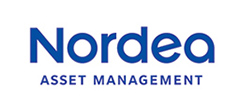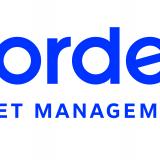
By Pierre-Henri Cloarec, Portfolio Manager of Nordea’s Emerging Stars Equity and Emerging Stars Ex China Equity Strategies
How does Asia/EM fit into Nordea Asset Management's 2024 investment outlook? What specific markets are you looking at?
We are optimistic and see a high level of structural growth potential in the following EM countries:
India: The Indian equity market has shown resilience despite valuations which can sometimes be described as demanding. These valuations can be justified by the fact that the country offers some of the highest quality businesses with a large runway for growth given the low GDP per capita at around 2000 USD and a very appealing demographic dividend, in a context where various structural reforms implemented in the last decade are now bearing fruit. After our meetings with top management of various companies in Mumbai and Delhi at the end of 2022, it became clear that government-led investments are finally boosting business confidence and driving more private capex. We are fundamentally positive on India and see great growth opportunities ahead.
Brazil: The Brazilian equity market is currently supported by improving GDP growth expectations as the labour market and consumption remain resilient and as inflation decelerates. The first two 50 bps rate cuts in August and September sent further positive signals to investors. A political consensus is emerging for the reform of Brazil's complex tax system and the chances are high that the law will be passed before the end of the year. This would be a milestone for the Brazilian tax system and could further boost investors’ confidence. Also despite the attractive macro environment, valuations continue to be supportive.
Mexico: After many years of stagnation, Mexico is emerging as one of the winners benefiting from the “nearshoring” trend, as markets such as the US shift supply chains away from China towards closer regions. Mexico has the second strongest economy in Latin America after Brazil and in terms of foreign trade, it is even in first place, which is due to its proximity to the US. Many US companies produce in Mexico, resulting in large volumes of exports which are further supported by current solid U.S. employment and manufacturing data. As a result GDP growth forecasts for 2023 continue to be revised upwards (Consensus = 3.1%).
For these favoured markets, which sectors/industries are you most constructive on? Any specific asset classes as well?
Indian banks: India has the world’s second largest population of financial consumers and abysmally low penetration of financial products. We expect Indian banks to benefit from the beginning of a new credit growth cycle led by a young population with a desire to consume combined with an under-leveraged household, as well as by a pick-up in private capex. Indian banks are well positioned to meet the upcoming demand with capital ratios well above the
regulatory requirements. The banks' balance sheets are also generally in very good shape and according to the financial stability report of the Indian central bank (RBI), the loan default rate of Indian banks has fallen to a historical low level.
Brazilian consumer: The Brazilian consumer sector should benefit from recent interest rate cuts that are likely to ease the pent-up demand and continue to push private consumption. Significantly reduced pressure on consumer prices, the improved employment situation and visibly increased wages are strengthening overall purchasing power. As a result Brazilian consumer confidence is much higher than in Europe or other Emerging Markets.
What risks and challenges in EM/Asia that you are looking out for? How is Nordea navigating/ mitigating these?
As we are expecting an environment of higher rates for longer, we inherently focus on Structural Growth companies with a proven business model, competitive market position, strong pricing power and a robust ESG profile. This stock selection process ensures that we pick companies which provide a great level of visibility on cash flow and profitability, while being capable to navigate through various business cycles as they are better equipped to pass through higher input costs to their customers. And in case they are unable to fully pass through these higher costs, their strong cash generation (ROIC) and solid balance sheet, two other criteria we focus on, will help mitigate the negative impacts of margin compression.
China: Despite stubbornly low household and business confidence, increasing property turmoil, and an urgent need to bring back foreign flows, the Central Government has been clear large stimulus is still not considered an option, which resulted in heightened frustration from investors. Instead we expect that measures might target selected areas like EVs, high-end manufacturing and automation or renewables / green tech. We are exposed to these structural themes through names like CATL (EV), Shenzhen Inovance (automation) as well as Sungrow, Riyue and Nari Tech (renewables / green tech).
Obviously household confidence needs to be restored in order to get out of the current vicious cycle and hence bring back local and foreign investors into Chinese Equities. That being said, we do believe that by focusing on finding companies exposed to the aforementioned structural pockets of growth, with solid long-term visibility, partly due to their alignment with the government’s long-term priorities, we should be able to generate value. While short-term results have been quite volatile, we remain confident on their longer-term prospects. More than ever, patience and trust in the process are paramount and should be rewarded for those who keep a long-term investment horizon and focus on selecting companies with sound and proven business models, currently trading at appealing valuation metrics.
Reference to companies or other investments mentioned should not be construed as a recommendation to the investor to buy or sell the same but is included for the purpose of illustration.
Nordea Asset Management (NAM, AuM 240bn EUR*), is part of the Nordea Group, the largest financial services group in the Nordic region (AuM 360bn EUR*). NAM offers European and global investors exposure to a broad set of investment funds. We serve a wide range of clients and distributors which include banks, asset managers, independent financial advisors and insurance companies.
Nordea Asset Management has a presence in Bonn, Brussels, Copenhagen, Frankfurt, Helsinki, Lisbon, London, Luxembourg, Madrid, Milan, New York, Oslo, Paris, Santiago de Chile, Singapore, Stockholm, Vienna and Zurich. Nordea's local presence goes hand in hand with the objective of being accessible and offering the best service to clients.
Nordea’s success is based on a sustainable and unique multi-boutique approach that combines the expertise of specialised internal boutiques with exclusive external competences allowing us to deliver alpha in a stable way for the benefit of our clients. NAM solutions cover all asset classes from fixed income and equity to multi asset solutions, and manage local and European as well as US, global and emerging market products. While most investors will still seek an exposure to equity markets, it is understandable if there is an increased desire to reduce risk.
Having entered the ESG space over 30 years ago, Responsible Investment is deeply rooted in our Nordic DNA. As an ESG pioneer and market leader we established an award-winning RI Team in 2009—now one of the largest in Europe. We currently offer a broad suite of RI solutions to investors of all types across the globe.
* Source: Nordea Investment Funds S.A., 30.09.2023
Nordea Asset Management is the functional name of the asset management business conducted by the legal entities Nordea Investment Funds S.A. and Nordea Investment Management AB and their branches and subsidiaries. This material is intended to provide the reader with information on Nordea Asset Management specific capabilities, general market activity or industry trends and is not intended to be relied upon as a forecast or research. This material, or any views or opinions expressed herein, does not amount to an investment advice nor does it constitute a recommendation to buy, sell or invest in any financial product, investment structure or instrument, to enter into or unwind any transaction or to participate in any particular trading strategy. Unless otherwise stated, all views expressed are those Nordea Asset Management. Views and opinions reflect the current economic market conditions, and are subject to change. Any investment decision should be based on the Offering Memorandum or any similar contractual arrangement. All investments involve risks; losses may be made. While the information herein is considered to be correct, no representation or warranty can be given on the ultimate accuracy or completeness of such information. Prospective investors or counterparties should discuss with their professional tax, legal, accounting and other adviser(s) with regards to the potential effect of any investment that they may enter into, including the possible risks and benefits of such investment, and independently evaluate the tax implications, suitability and appropriateness of such potential investments. Published by the relevant Nordea Asset Management entity. Nordea Investment Management AB and Nordea Investment Funds S.A. are licensed and supervised by the Financial Supervisory Authority in Sweden and Luxembourg respectively. This material may not be reproduced or circulated without prior permission. © Nordea Asset Management.



